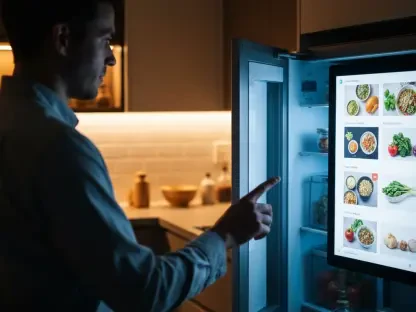Navigating through heavy traffic or unexpected roadblocks can be an ordeal, but Google Maps has become a go-to tool for drivers to ease their journey. Recently, Google has introduced a significant change by incorporating Waze’s community-driven traffic incident alerts into Google Maps. Originally, Waze’s hallmark feature of live, user-generated traffic updates was exclusive to its own app. However, Google Maps has begun integrating these alerts, such as “police reported ahead,” alongside its existing incident reporting tools. This change, reported by users through platforms like Reddit and Android Police, is becoming increasingly noticeable, especially as drivers gear up for the holiday season.
Community-Driven Traffic Alerts
Integration of Waze Features into Google Maps
Google Maps has gradually been asking drivers to report traffic incidents through pop-up messages, but the direct incorporation of Waze’s alerts into the app is a relatively new development. These alerts, which include notifications about lane closures and nearby construction, can greatly impact travel plans by providing real-time, user-generated incident reports. The integration is not merely limited to the United States but has been rolled out globally across Android, iOS, Android Auto, and CarPlay platforms. This comprehensive rollout indicates Google’s commitment to unifying traffic incident reporting for a broader, more seamless experience.
Despite these efforts, not all drivers are comfortable with the new alerts. Some users find the community-driven incident reports to be distracting or excessive, and there is currently no straightforward way to disable them. Reactions across various online forums and Reddit threads reveal a division among users: while some appreciate the additional information, others feel overwhelmed by the frequent alerts. This feedback suggests that the user base is split on the utility of these new features and how they affect the overall navigation experience.
The Beginning of Integration
The integration of Waze features into Google Maps is part of a broader trend where Google appears to be combining functionalities from both apps. This process began in earnest in 2022 when Google merged the teams working on Maps and Waze. At the time, Google reassured Waze users of its commitment to maintaining Waze’s unique identity and dedicated community. However, Google’s history of incorporating acquired apps into its ecosystem raises concerns about Waze’s future independence. The folding of other popular apps, such as Fitbit, into Google’s suite has often come at the cost of the original app’s unique elements, much to the dismay of its dedicated user base.
The integration also raises interesting questions about the future of user engagement and satisfaction on both platforms. Will Google Maps users embrace the enhanced functionality, or will they feel the need to switch off these alerts, assuming that option becomes available? As the integration continues to unfold, Google must carefully balance innovation with user satisfaction to avoid alienating a portion of its audience. This balance becomes all the more significant given the discerning nature of today’s tech-savvy users, who value both innovative features and user-friendly experiences.
Diverging User Reactions
User Sentiments on Excessive Alerts
Overall, there is a growing unease among some Google Maps users regarding the frequency and nature of these new alerts. Though the primary aim is to enhance the navigation experience by keeping drivers informed of real-time incidents, the alerts are perceived by some as a source of distraction. Many users have taken to social media and forums to express their frustrations, stating that the barrage of updates can sometimes detract from the driving experience rather than enhance it. This unexpected outcome poses a challenge for Google, which must now navigate the fine line between providing useful information and overwhelming its users with excess data.
The main criticism centers on the perceived inadequacy of existing customization options. As it stands, Google Maps does not offer a straightforward way to disable these community-driven alerts, leaving some users clamoring for more control over their app settings. This lack of customization has led to discussions about how Google can better manage user preferences to improve overall satisfaction. Balancing these concerns is essential for Google as it strives to make its map services as intuitive and helpful as possible without alienating any subset of its user base.
The Future of Google Maps and Waze
Google’s decision to incorporate Waze’s features signals a broader strategy of unification within its suite of navigation tools. While the aim is to create a more comprehensive and reliable mapping service, the execution of this integration will be crucial in determining its success. Users’ mixed reactions to the updates highlight the complex nature of this endeavor. On one hand, real-time, community-driven alerts can significantly enhance the utility of Google Maps, making it an even more indispensable tool for drivers. On the other hand, the lack of customization and the potential for distraction might detract from the overall user experience.
As Google moves forward with this integration, it will need to remain attuned to user feedback and be willing to make adjustments as necessary. Listening to its user base and implementing more flexible alert settings could be a vital step in ensuring that the new features are well-received. Additionally, Google must continue to emphasize the unique strengths and identities of both Google Maps and Waze while blending their functionalities in a way that adds value for users. The challenge lies in striking the right balance between innovation and usability, ensuring that both existing Waze and Google Maps users feel their needs and preferences are adequately addressed.
Conclusion
Dealing with congested traffic or sudden roadblocks can be quite challenging, but Google Maps has become a favored tool for drivers to simplify their travels. Recently, Google introduced a notable update by incorporating Waze’s well-known, community-driven traffic incident alerts into Google Maps. Previously, Waze’s famous feature of real-time, user-generated traffic updates was exclusive to its app. However, Google Maps is now integrating these alerts, such as notifications for “police reported ahead,” alongside its existing incident reporting tools. Users have reported this development through platforms like Reddit and Android Police, and it’s becoming increasingly noticeable as more drivers use the feature, particularly with the holiday season approaching. This integration of Waze’s real-time data into Google Maps is an effort to enhance the user experience by providing more comprehensive and timely traffic information, aiming to make driving easier and safer for everyone.









